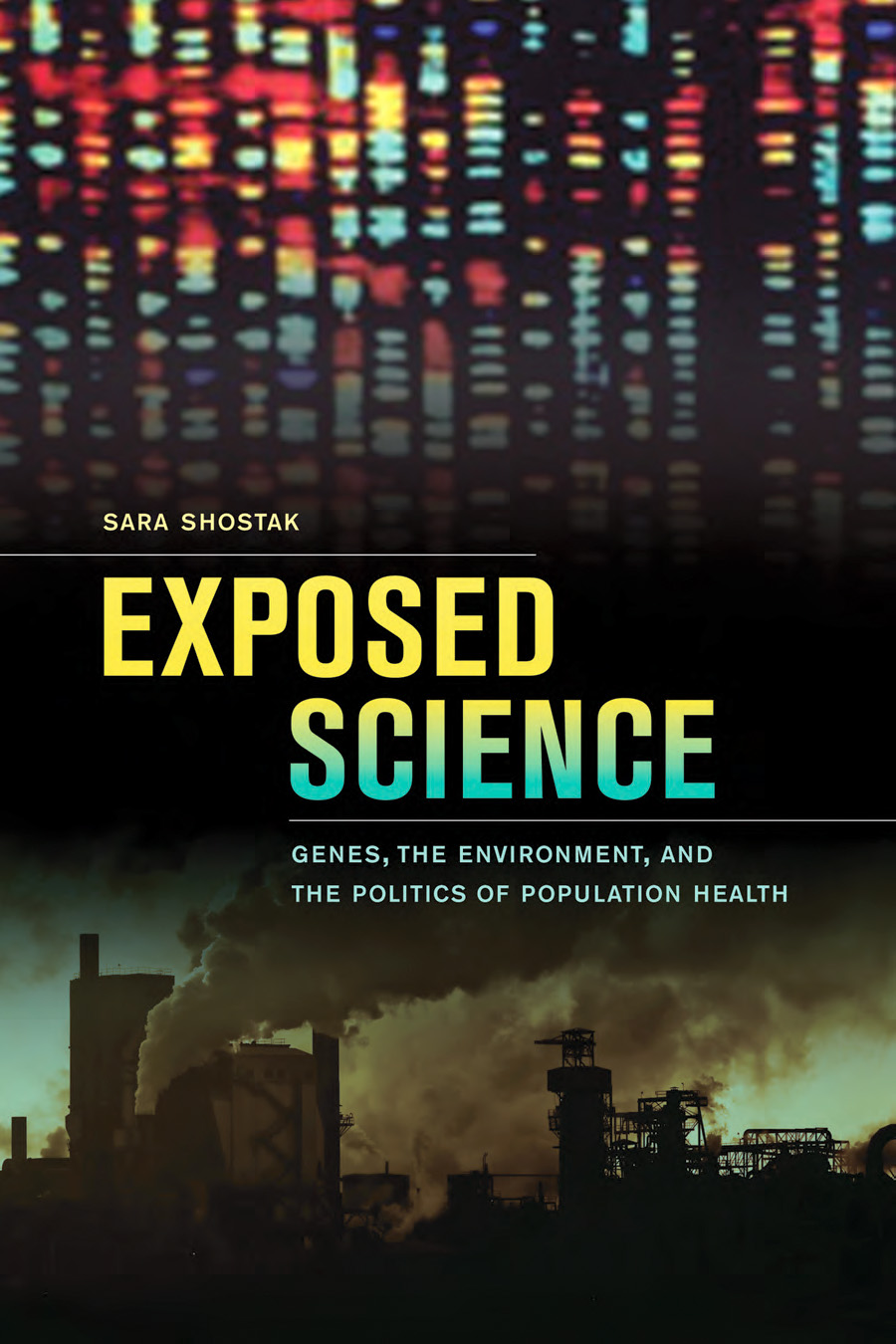Sara Shostak explores human, environmental health issues
New book digs into environmental science research and policy-making
“But, is it safe?”
While price and quality have been at the forefront of purchasing decisions for decades, today’s newspaper headlines make clear that concerns about the health effects of chemical exposures are increasingly a part of individuals’ decision-making about everyday products.
“Though we may not realize it, we use environmental health science in our daily lives,” says Sara Shostak, assistant professor of sociology and the author of “Exposed Science: Genes, the Environment, and the Politics of Population Health.” “Even before you individually make a decision about whether or not to buy a certain product, or to try avoid certain kinds of pesticides in food, environmental health scientists, risk assessors and regulators have been asking questions about the risks posed by such exposures.”
 “Many of my friends who have had children in the past five or six years have thought a lot about what foods they’ll eat because they don’t want to expose their developing child to mercury,” says Shostak. “We know that there are increasing levels of mercury in seafood. There was a huge controversy a couple of years ago about Bisphenol A in baby bottles and in children’s toys. We use this research all the time.”
“Many of my friends who have had children in the past five or six years have thought a lot about what foods they’ll eat because they don’t want to expose their developing child to mercury,” says Shostak. “We know that there are increasing levels of mercury in seafood. There was a huge controversy a couple of years ago about Bisphenol A in baby bottles and in children’s toys. We use this research all the time.”
Even as the public struggles to make sense of how chemicals in the environment affect our health, major changes are underway in environmental health science and regulation.
Shostak finds most people know very little about environmental health research and regulation. By writing about the history and recent and proposed transformations in environmental health science and policy-making, Shostak hopes to make these worlds more accessible. She says, “We need to change the terms of the debate about environmental risk and safety in this country. Rather than focusing on the effects of single chemicals, we need ways of assessing the real life effects of the multiple chemicals that we are exposed to every day.”
Shostak is especially interested in the different approaches that scientists have taken to studying gene-environment interaction. Her research documents how some scientists seek to identify genetic susceptibilities which make some people more vulnerable to being harmed by environmental exposures. In this framing of gene-environment interaction, scientists acknowledge the harmful effects of environmental contaminants, but genetic variations in individuals’ responses to them are the crucial problem to be explained. Other scientists examine how environmental chemicals affect human genetic material, whether by causing DNA damage (e.g., mutations) or altering gene expression (e.g., epigenetics). In this framing of gene-environment interaction, scientists acknowledge human genetic variability, but the effects of environmental pollutants are the crucial problem to be explained.
 These different approaches, Shostak says, have implications for whether we understand environmentally associated illnesses as an individual, biomedical problem, a societal problem, or a combination.
These different approaches, Shostak says, have implications for whether we understand environmentally associated illnesses as an individual, biomedical problem, a societal problem, or a combination.
Shostak contends that tracing the history of environmental health research also illustrates unique pressures that environmental health scientists face. One researcher interviewed by Shostak described legal battles between industry and regulatory agencies as the “drumbeat” to which the entire field works. Shostak argues that this “drumbeat” makes it more difficult for scientists to do research that would inform broad efforts to protect public health.
One of the topics Shostak covers in her book is scientists’ efforts to change the process of risk assessment and regulation. For example, much environmental regulation in the U.S. relies on measures of chemicals in the ambient environment, and defines threshold levels that specify how much lead, mercury or other substances can be in the air, water or the soil before it’s considered to be an actionable problem. In contrast, says Shostak, “The scientists whom I study are interested in changing that framework to include measurements and indicators that we would take from inside the human body.”
Shostak was employed at the UCLA Center for Health Policy Research while working on her masters in public health and it was soon thereafter that “the human genome project was in the news, and the first draft sequence was published,” says Shostak.
“I became really interested in what the policy implications of new forms of science would be.” She was particularly interested in what regulation would look like if the scientific underpinnings of the regulations started to change.
Shostak hopes that her book will help students in the social sciences, public health, public policy and bioethics think differently about environmental health science and policy.
Categories: Humanities and Social Sciences, Research





